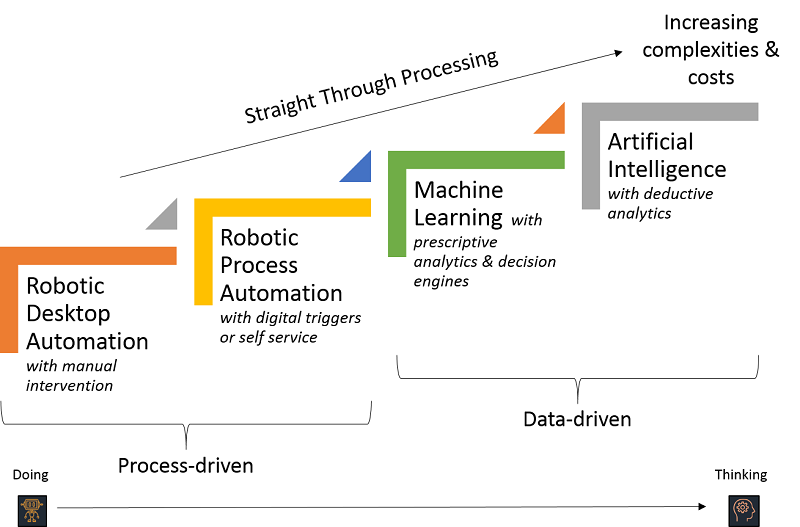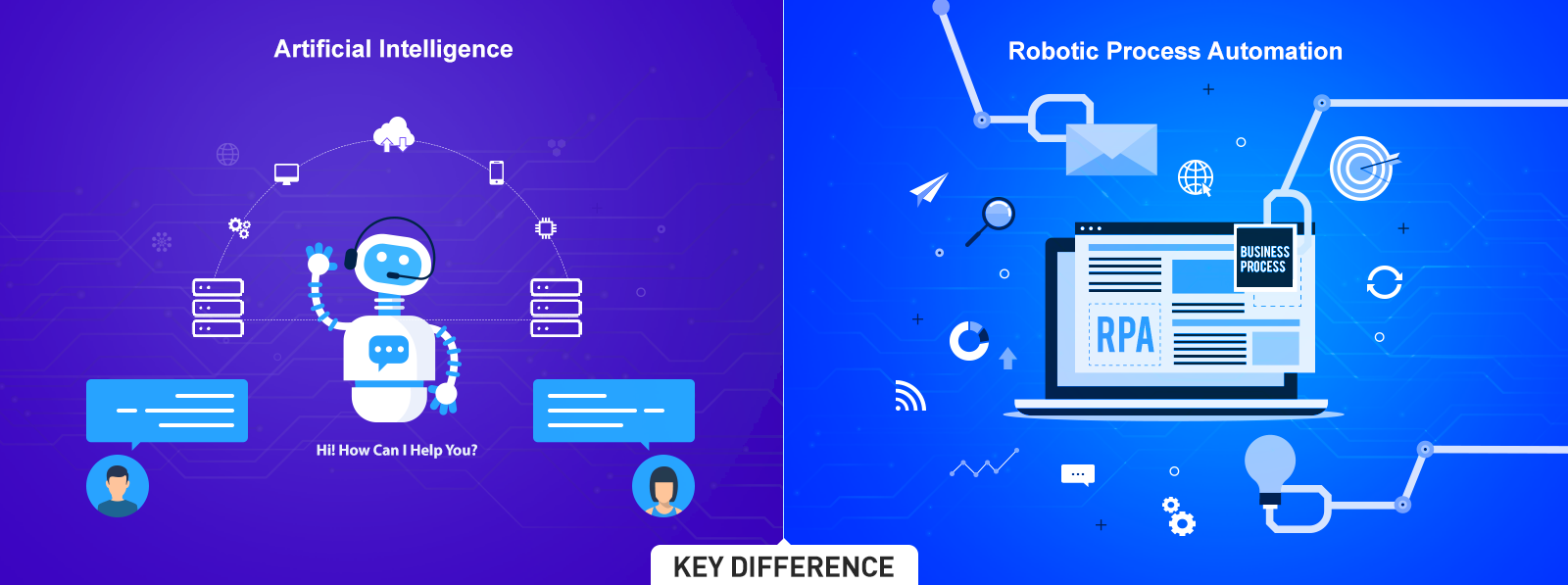In the age of automation, it is obvious that people tend to get baffled between Artificial Intelligence (AI) and Robotic Process Automation services. The advent of new terms Intelligent Automation (IA) and Intelligence Process Automation (IPA) adds fuel to the fire. Here we highlight the difference between AI and robotic process automation (RPA) on the basis of process automation.
Simply put, RPA is a software robot that performs repetitive tasks while following strict rules. It is like a clerk who is good at clerical jobs. But, AI is an umbrella term that involves the simulation of human intelligence and thought process by machines while dealing with plenty of interrelated information.
Let’s dig deeper the difference between AI and RPA services.
First of all, let’s go through the definitions given by IEEE SA (Standards Association) in its Guide for Terms and Concepts in Intelligent Process Automation. According to IEEE SA, RPA is defined as a use of a preconfigured software instance that uses business rules and predefined activities to complete the autonomous execution of a combination of processes, activities, and tasks in one or more unrelated software systems to deliver a result or service with human exception management. AI is referred as a combination of cognitive automation, hypothesis generation and analysis, reason, machine learning (ML), natural language processing, and intention algorithm mutation to produce insights and analytics at or above human capability.
These definitions show RPA as a robot consists of software to mimic human actions and AI is a technology to simulate human intelligence. From RPA services to AI is a journey between doing and thinking. RPA is process-driven and AI is data-driven. Both these concepts form the different ends of IA or Intelligent Automation.

Image Source: Medium.com
Still find it a bit of a mouthful? Let’s have an example of invoice processing.
The invoice process consists of several steps like downloading invoices from emails, extracting relevant information, and recording the same in the accounting software. Now, RPA can help you in this process by automating these repetitive tasks. From retrieving emails to downloading invoices, and finding information to creating bills in the accounting software- all these tasks handled through copy and paste actions by RPA. But, AI does the entire process intelligently. It can extract more meaningful and relevant details and fetch useful data from invoices to enable you to make informed decisions.
Related Reading- How AI and RPA Convergence Taking Automation to Next LevelYou may wonder why RPA cannot do these activities. Well, robotic process automation services can make every activity scripted for the bot or robot, but they cannot ‘teach’ the bot to extract the relevant information from every invoice as different vendors or suppliers send invoices of different formats. There, AI can interpret the invoice just like a human. In our example, you need a human operator to validate the information of every invoice if RDA (Robotic Desktop Automation) is in place, whereas AI does not require any human intervention in the entire process.
Process-Driven vs Data-DrivenAs mentioned above, RPA is process-driven and AI is a data-driven concept. Let’s go through this difference.
RPA is about automating mundane, repetitive tasks that require interaction with multiple IT systems. RPA services keep process discovery workshops in focus to map out the process and transform the process into the Process Definition Document (PDD) for effective RPA implementation. On the other hand, AI id largely driven by the analysis of good quality structured data. All you need to get the right ML algorithm to interpret the processes smartly.
Concluding LinesIt is fair to mention that both RPA and AI can contribute significantly in transforming your organization digitally. Specific use cases of your business will help you determine the right strategy between RPA and AI (or both). Quick implementation and TTM (Time to Market) advantage are a few characteristics of RPA, and it is the first step toward digital transformation. If you’re ready to make a smart move by implementing RPA, then the right time is now!
Higher efficiency and cost reduction are two major benefits of robotic process automation. We take care of every aspect of your business process while providing the best-in-class RPA services globally. At Silver Touch, you can always remain assured of seamless performance and excellent quality solutions. If you are interested in having a free online demo, getting a quote, or know more about our robotic process automation services, just drop us a line at info@silvertouch.com.



